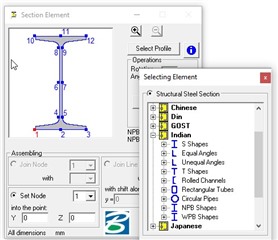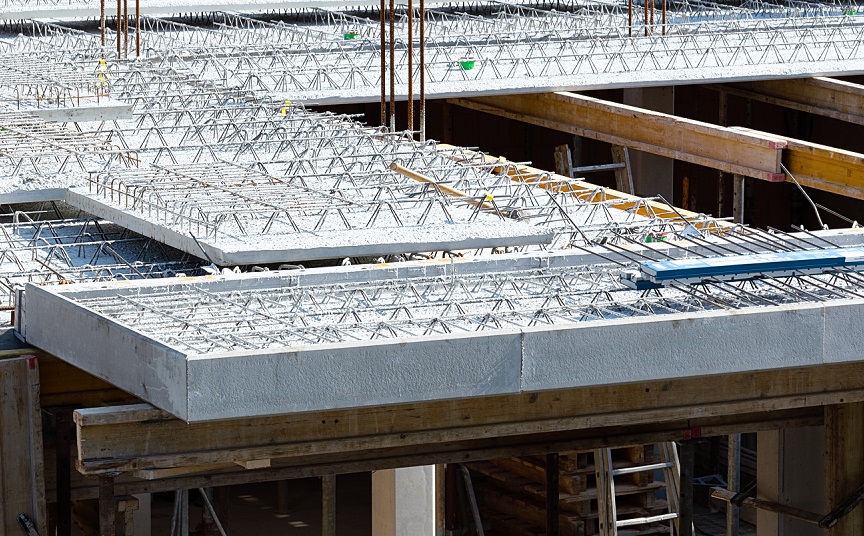

The NJ-shape and the F-shape profiles are closely related. The lower slope break point significantly reduced the lifting of the vehicle and greatly improved the performance of the concrete barrier. The major difference is that the distance from the ground to the slope break point of the F-shape is 255 mm - 75 mm lower than the NJ-shape. In addition, their contractors did not want to change profiles because they had a considerable investment in the forms required to produce the NJ-shape.Īs shown in figure 1, the slopes of the F-shape and the NJ-shape are the same. This was because the states were well-satisfied with the NJ-shape, which also met the crash-test criteria. Configuration F became known as the F-shape.Įven though the performance of the F-shape was superior to the NJ-shape performance, it was not widely used.
#Concrete barrier lumenrt template series
The results of these computer simulations were confirmed by a series of full-scale crash tests. As a result, the use of the GM shape was discontinued.Ī parametric study (systematically varying the parameters) of various profile configurations that were labeled A through F showed that F performed distinctly better than the NJ-shape. After impacting the GM shape in crash tests, these small cars became unstable and tended to roll over. This higher distance caused excessive lifting of the small cars of the 1970s, such as the Chevrolet Vega. The old General Motors shape, or GM shape, had a distance of 380 mm (15 in) from the ground to the slope break point. For the NJ-shape, this distance is 330 mm (13 in). The key design parameter for a safety shape profile is the distance from the ground to the slope break point because this determines how much the suspension will be compressed.

Figure 2 - NJ Turnpike Authority's heavy-vehicle median barrier. Wherever possible, drainage should be collected along the toe of the barrier because a drainage depression or curb out in front of a concrete safety shape can cause vehicle instability and lead to rollover. Higher openings should not be used because wheels and bumpers can interact with them, snagging and causing the vehicle to yaw. This vertical reveal makes very little change in the vehicle dynamics because it has about the same effect as hitting a 75-mm curb.ĭrainage openings in the face of the reveal do not have a significant effect on an impacting vehicle. The 75-mm (3-in) vertical "reveal" at the base of the barrier is only intended to provide a neat line for asphalt resurfacing. Modern slipforming machines can readily slipform concrete barriers up to 1320 mm (52 in) in height without a radius. This radius is no longer necessary for slipforming. Years ago, it was common practice to form a 255-millimeter (10-inch) radius at the intersection of the two sloping surfaces to facilitate slipforming the barrier. Preferably, concrete safety shape barriers should be adjacent to a paved surface so that the wheels cannot dig into the soil and cause the vehicle to overturn. If the vehicle is lifted too high into the air, it may yaw, pitch, or roll, which can cause the vehicle to roll over when the wheels come in contact with the ground again. This aides in banking and redirecting the vehicle. It is only necessary to lift the vehicle enough to reduce the friction between the tires and the paved surface.

Modern vehicles have relatively short distances between the bumper and the wheel as a result, bumper contact is followed almost immediately by wheel contact. Therefore, exposed aggregate and other rough surface finishes should be avoided. However, wheel side-scrubbing forces provide some additional lift, particularly if the barrier face is rough. Most of the additional lift of the vehicle is caused by the lower sloped face compressing the front suspension.

Then, as the vehicle becomes more nearly parallel with the barrier, the wheel contacts the lower sloped face. If the bumper is relatively weak, the front end starts to crush before any uplift occurs. This interaction initiates lifting of the vehicle. The front bumper impacts the upper sloped face and slides upwards. (See figure 1.) Figure 1 - Concrete safety shape profiles.įor higher impact angles, the NJ-shape is actually a multistage barrier. For the more common shallow-angle hits, the NJ-shape is intended to minimize sheet metal damage by allowing the vehicle tires to ride up on the lower sloped face. When most people think of concrete barriers, they think of the New Jersey Concrete Safety Shape Barrier (NJ-shape or Jersey barriers). Concrete barriers appear to be simple and uncomplicated, but in reality, they are sophisticated safety devices. The basic principles of concrete barriers are not generally known or understood.


 0 kommentar(er)
0 kommentar(er)
